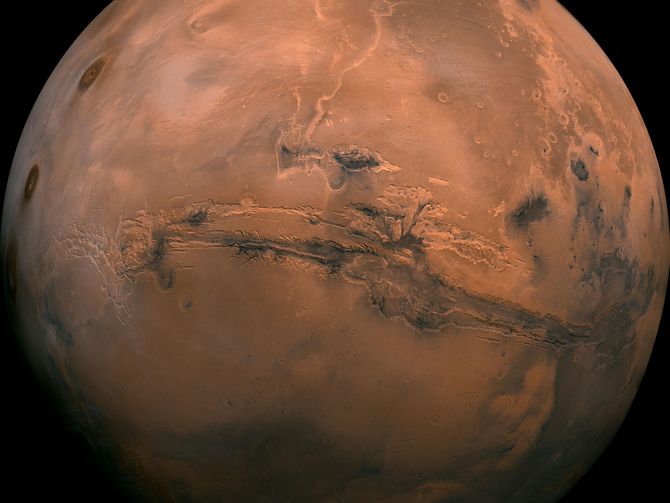These days the Red Planet is looking quite hazy all because of a massive dust storm, which has already led to one NASA rover hibernate. This huge dust storm has originated from some point and the researchers think that they have figured out that source.
The near about six hundred miles long (one thousand kilometers) Medusae Fossae Formation close to the equator of Mars, dates back its evolution to a long-ago volcanic event. A new study conducted by a group of researchers regards this wind-eroded Medusae Fossae as the sole biggest origin of the dust storm on the Red Planet.
The co-author of this study, Kevin Lewis at the Johns Hopkins University, said in a statement, “Mars wouldn’t be nearly this dusty if it wasn’t for this one enormous deposit that is gradually eroding over time and polluting the planet, essentially.”
The team of researchers involved in this study analyzed the “chemical composition” of the Martain dust by making use of the information gathered by the landers and rovers from various areas across Mars. The lead author of this study, Lujendra Ojha, said in a statement, “Dust everywhere on the planet is enriched in sulfur and chlorine and it has this very distinct sulfur to chlorine ratio.”
The research team made a comparison between the dusty fingerprint and the data gathered by the Mars Odyssey probe depicting a similar chemical match as that of the Medusae Fossae Formation.
The team of researchers estimated as to what quantity of this formation has been eroded through the period of near about three billion years. The researchers concluded that the amount of the dust on the Red Planet is sufficient to build a global sheet between two meters (6.5 feet) and twelve meters (39 feet) thick.
The present massive dust storm on Mars started late in the month of May and has left the Opportunity rover of NASA out of any contact. The Opportunity has entered into a hibernation state to preserve its remaining battery charge.
All the potential observations of this new study have been published in the Nature Communications journal.


